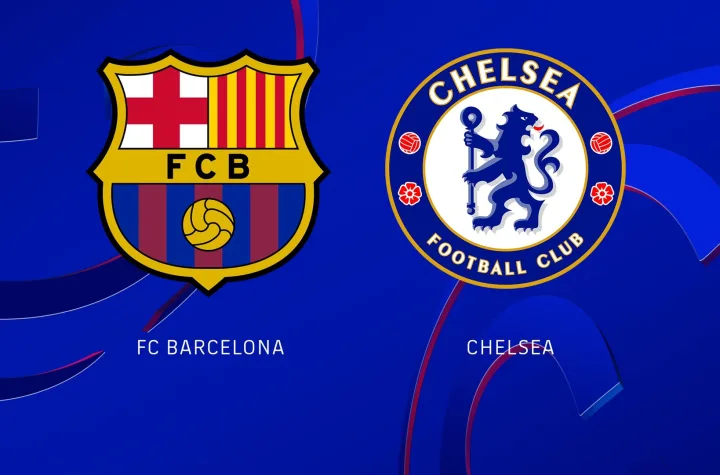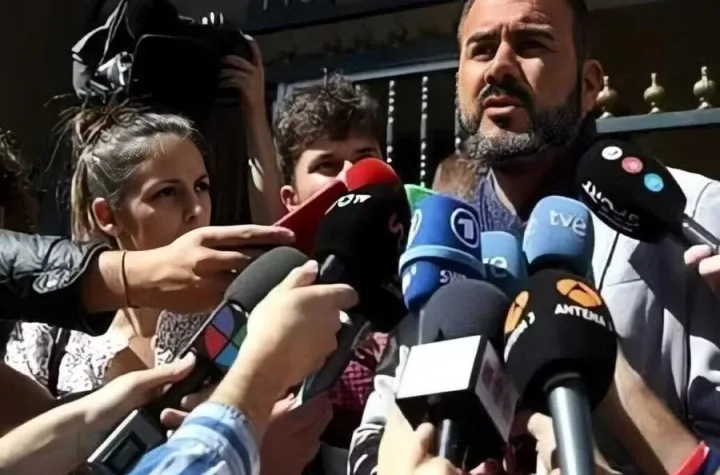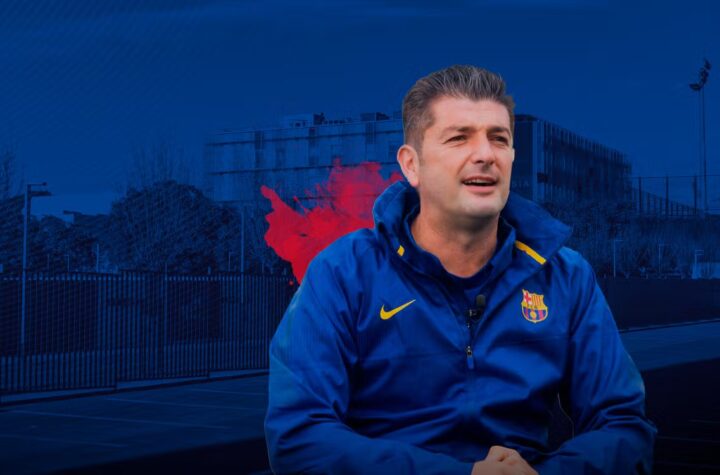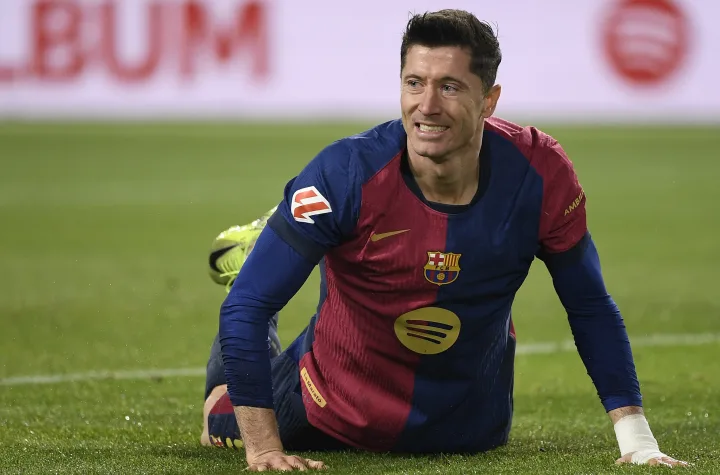

Playing away at the Estadio Municipal de Balaídos over the last few years has proven to be a formidable challenge for FC Barcelona, who have had only one win in their previous five La Liga encounters away at Celta. Even during the much-vaunted MSN era, Barcelona lost a whirlwind game of football 4-1 away from home in the 2015-16 season. The most recent game between the two teams continued in a similar vein, with Celta causing Barça a whole host of problems in an end to end 2-2 draw on a rainy, windy night.
FC Barcelona came into this game with arguably their best player of the season missing (yes, a 17-year-old has been their best player). If that wasn’t enough, they were also without their starting LB in Alejandro Balde. Replacing Balde in the lineup was Gerard Martin, who had an absolute shocker of a game; his performance was quite poor from both a defensive and offensive perspective. This coupled with the other fullback in Joules Kounde having an equally poor game by his standards led to the Celta’s gameplan of creating threat by playing balls in behind the fullbacks working to a tee.
Let’s take a look at both team’s Passmaps.

Figure 1:FC Barcelona’s passmap

Figure 2:Celta Vigo’s passmap
The key takeaways from these passmaps are as follows:
- – Celta create overloads on Barça ’s right flank to advance, try to access runners from deep to break the offside trap
- Barça tried something similar on the same side with Raphinha attacking depth.
- Poor connection between Lewa, Olmo and Raphinha, with the fullbacks being especially poor in possession (bar H. Fort)
Right, so let’s look at Celta’s game plan in more detail, and why it worked so well. Celta’s strategy was to play the ball in behind the Barça fullbacks, primarily targeting Jules Kounde’s flank and the space in behind. The reasoning for this is threefold. Let me explain.
- One, Raphinha is a player who is never going to be a touchline winger (look at his heatmap in the figure below). This means that he is almost always going to drift inward into the more central areas and attack depth as much as possible, meaning that Kounde won’t have much support in defense (despite Raphinha exceptional work rate off the ball).
- Secondly, for all of Kounde’s improvements in his interpretation of the RB role, he is still a converted CB, meaning that his offensive potential has a pretty clear celing.
- Lamine’s absence: Lamine is easily Barça ’s most potent attacking threat. His talent and gravity mean that he demands the attention of at least two players at all times. Without Lamine, teams can dare to be far more proactive in attacking Barça ’s left flank.

Figure 3: Raphinha’s centrality
To take advantage of Raphinha’s positional tendencies, Celta constantly created overloads on the left flank, with ex La Masia graduate Oscar Mingueza being responsible for Celta’s ball progression. Coupled with this, Jonathan Bamba was tasked with making runs in from deep to break Barça ’s offside trap. Bamba’s deep starting position meant that the Barça ’s defensive line could not step up to play him offside. Coupled with this, Douvikas (the striker) also tended to drift towards the left, causing positional and tracking dilemmas in the Barça defense.

Figure 4: Mingueza’s passing and carrying actions

Figure 5: Oscar Mingueza’s ball progression stats

Figure 6: Celta create overloads on the left flank
To explain this via formations and structures, let’s take a look at how Barça ’s defensive gameplan. They wanted to press in a 4-4-2 off the ball, with Raphinha and Lewandowski forming a front two, with Olmo dropping back into a wide left midfield role. On the flanks, both Kounde and G. Martin (and later, Fort) had to step up into midfield to follow the Ceta wingers.

Figure 7: Barça ‘s pressing structure

Figure 8: Bamba makes runs from deep to break the offside trap
The issue here lies in the fact that it places an enormous amount of responsibility on Barça ’s fullbacks from both an offensive and defensive perspective. If the timing of the jumps is calculated incorrectly, then the team runs the risk leaving the ball carrier with time and space against a high line. We all know that Barça do not compromise on their strategy of maintain their high line and attempting to catch the opposition offside. So, if the fullbacks have poor games, then Barça will invariably suffer. Luckily for Celta, both the starting fullbacks had defensive shockers.
Barça ’s problems in attack:
The team’s problems in attack are all the more glaring under Lamine’s absence, which creates a domino effect on how Barça ’s attack goes from being one of the most potent in all of Europe, to one which looks devoid of clear ideas and patterns of play. This is the chain of events in question:
- No Lamine, no dribbling ability on the wings, nor anyone who can remotely match his game IQ and passing.
- This forces Kounde to take on a much larger proportion of the attacking responsibility. Now Kounde is fine when his job is to give Lamine the ball and adjust to his movements (he does this pretty well actually), but when he is tasked with bearing more of a creative burden, he will invariably fall short. Again, he isn’t to blame here, seeing as his natural position is that of a CB. (No, I don’t expect a Dani Alves level of output from a converted RB).
- Raphinha’s value as an off-ball runner is greatly diminished. When two of your other frontline partners aren’t really known for their creativity and dribbling, that’s sort of what he needed to offer here. Not really his forte. Also, Barça absolutely cannot ask Raphinha to hold width.
- Lewa is neutered massively without Raphinha’s off ball movement (used in conjunction with Lamine’s gravity and passing). He’s not a self-sufficient striker at this stage in his career, and you aren’t playing to his strengths playing in this manner.
- Dani Olmo is tasked with holding width and playing on the right wing. However, playing with a limited player in Gerard Martin means that he cannot leave his position to drift into the half spaces as often as he would like to, where he is at his most dangerous.
Considering all this, Celta could afford to be brave in their press, almost going man for man in their defensive phase. They knew that when Barça have settled possession, they lack the individual 1v1 threat on the flanks to draw the Celta backline’s attention to the wider areas, meaning that they could congest the centre and play the ball behind the Barça fullbacks in transition.

Figure 9: Celta go 1v1 all over the pitch in Barça ‘s half

Figure 10: Barça go long, loose the ball
Tactics don’t matter if you loose individual duels!
This goes without saying, but it bears reminding. Arne Slot, Liverpool’s manager, emphasized the critical role of winning individual duels in his team’s performance. After a match against Ipswich Town, he stated:
“First thing I said was we don’t have to speak about tactics if we loose so many duels and that’s what we did.”
Against Celta, Barça came out second best in their duels more often than not. This becomes even more risky when you try to play a game heavy in transitions as opposed to controlled possession. In essence, Barça played right into Celta’s hands with this approach. This coupled with their carelessness on the ball, the lack of patience in their ball progression and poor individual performances meant that they ended up losing the ball in dangerous areas of the pitch throughout the game.

Figure 11: Data on both team’s loss of possession

Figure 12: High turnovers
Keep in mind that Flick’s teams aren’t exactly known for their pragmatism. Barça are not yet a team that is secure against ball losses in congested areas, specially the centre of the pitch. They do not have the rest defence in place to mitigate against careless losses, as they keep the fullbacks high up the pitch at all times. The idea is to have their central players in close proximity to enable rapid interplay while also being able to be close enough to counter press. However, when the proximity between the players is not at the desired metric, the team will come unstuck.
Take a look at the figures below to illustrate this:

Figure 13: Barça loose the ball in midfield

Figure 14: A team in disarray
Having said all this, Barça only conceded their first of the night after a horrendous error from Kounde, and after going down to 10 men following Casado’s dismissal. The equalizer also came from another careless loss of possession, along with some quite inexcusable defending from Frenkie de Jong in the leadup to the gaol. All in all, a 2-2 draw was fair reflection of the game. Barça ’s lead could now be cut to 1 point if Real Madrid win their games in hand. There is no more margin for error again.





More articles
Clash of Titans: FC Barcelona Femení faces Chelsea FCW again in the Champions League.
Miguel Galán: “Tebas actions with Barça have bad faith bordering on an alleged crime of administrative prevarication”
Franc Artiga: “They’re hiring me because I’ve been at Barça for many years”